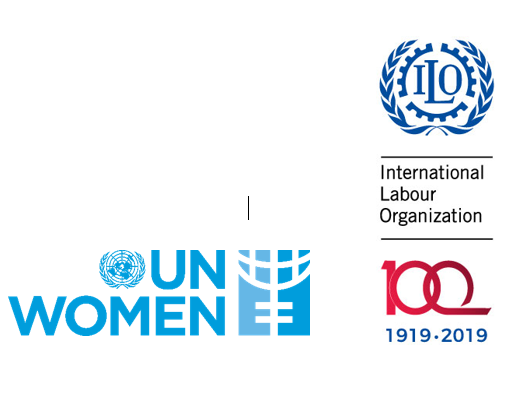Research indicates that violence and harassment against women working in the transport industry is widespread and has been carried out by colleagues, managers, customers and passengers, vehicle owners, and, in some countries, by local authorities and the police (ETF, 2017). Social norms play a role in reinforcing societal attitudes about women not “belonging” in the transport sector– this acts as a powerful barrier in keeping women silent about their experiences of violence. Violence against transport workers has been identified as one of the most important factors affecting the attraction and retention of women in transport jobs (ILO, 2013). In response to the alarming increase in violence against women from third-parties in the transport sector, transport companies, in consultation with workers and their representatives, have implemented a range of safety measures.
Good practices on providing safety measures in transport include the following:[1]
- Avoiding situations where women work in isolation, particularly at night.
- Having alarm systems and adequate security available to assist isolated workers.
- Implementing security measures, such as protective screens on one-person pay buses and customer service counters.
- Ensuring safe access to toilets and other facilities for women.
- Safety audits to identify where workers may be at risk from unsafe transport routes or locations.
- Safety planning, incident response training and awareness-raising amongst workers about how to respond and protect themselves in potentially threatening or dangerous situations.
- Systems for reporting third-party violence and learning from, responding to and implementing measures to prevent its reoccurrence.
- Holding discussions with women workers and listening to them about the safety measures that would benefit them.
|
Women transport workers’ safety at work |
|
Women bus drivers challenge sexual violence and harassment in Maharashtra State, India[2] Women bus conductors in India face a number of risk factors linked to violence and harassment, including insecurity, lack of access to toilets on duty, and contractual requirements to spend the night alone in the bus when it breaks down. The Maharashtra State Road Transport Union is addressing the high risks of sexual harassment and sexual assault faced by women bus conductors in Maharashtra State. The union found that, by discussing both the risks faced by women workers and by women passengers, it was possible to gain wider community support. This led to the formation of an alliance of transport unions, passenger associations and NGOs, and a joint union/community campaign to create safe working conditions and to address violence against bus conductors and passengers in Maharashtra State. Violence and harassment against women bus conductors and passengers has led the union to organize women and improve their representation in decision-making roles. An increasing number of women are employed in transport in India. Meetings with the Maharashtra State Road Transport Corporation have led to around 200 out of 300 workplaces having changing rooms and introducing toilet facilities for women, which have helped to improve women’s safety. A joint union/employer strategy has been agreed to reduce gender occupational segregation. “We saw the tremendous changes, especially in Maharashtra. The female bus conductors have found the strength to challenge traditional, patriarchal structures and practices. And hundreds of strong, female leaders have stepped forward. Male union leaders have now realised that the campaigns against gender-based violence have been positive; they have strengthened the trade union in their struggle against privatisation and low pay.” (Jodi Evans, Women’s Officer, International Transport Federation (ITF)). |
|
Organizing informal women transport workers in and around major transport hubs in Uganda (ILO, 2017e) The Amalgamated Transport & General Workers Union in Uganda has been organizing low-paid and often informal workers in the transport sector to combat violence and inequality at work. The majority of women work in the lowest-paid occupations, such as food vendors, clerks, parking attendants, and cleaners, and can face situations of vulnerability. Many are women workers in the informal economy, who work in and around major transport hubs. The single most important issue identified by the women was violence, harassment and intimidation by men. The project supported by the International Transport Workers’ Federation (ITF) has included seminars with union leaders, cross-border exchange visits, organizing activities and local participatory research and mapping to build the visibility of informal women workers in transport. The project has led to improved representation of women informal transport workers in the union and the establishment of an Informal Sector Women’s Committee. |
|
Campaign for safe work and violence free workplaces for women transport workers in Bulgaria (ILO, 2017e) The Federation of Transport Trade Unions of Bulgaria (FTTUB) has implemented a campaign to end violence against women workers in transport. This started with a survey of women workers, “Someone to share with”, based on self-administered, anonymous questionnaires left in designated places in the workplace. The survey provided an evidence base to inform FTTUB’s subsequent campaigning, advocacy and negotiation of collective agreements on violence in the workplace. FTTUB has linked work against gender inequalities and gender segregation in the workforce, including their participation in the ITF campaign “Strong unions need women” with their work on violence prevention. This recognizes that unequal gender roles and relations are closely connected to violence against women. Following the campaign, transport companies began introducing safety measures for women bus and tram drivers, including protective screens. Four landmark municipal agreements were negotiated, leading to improved safety measures, awareness raising amongst the public, employers and workers, and improved safety measures and facilities for women. |
[1] These safety measures are drawn from sources including: UN Women’s (online) resource on Safe Public Transport: http://www.endvawnow.org/en/articles/252-safe-public-transit-for-women-and-girls-.html; International Transport Federation (ITF) (undated) Action Guide on Violence Against Women. London, ITF.
[2] See: http://www.itdp.in/wp-content/uploads/2017/12/171215_Women-and-Transport-in-Indian-Cities_Final.pdf
